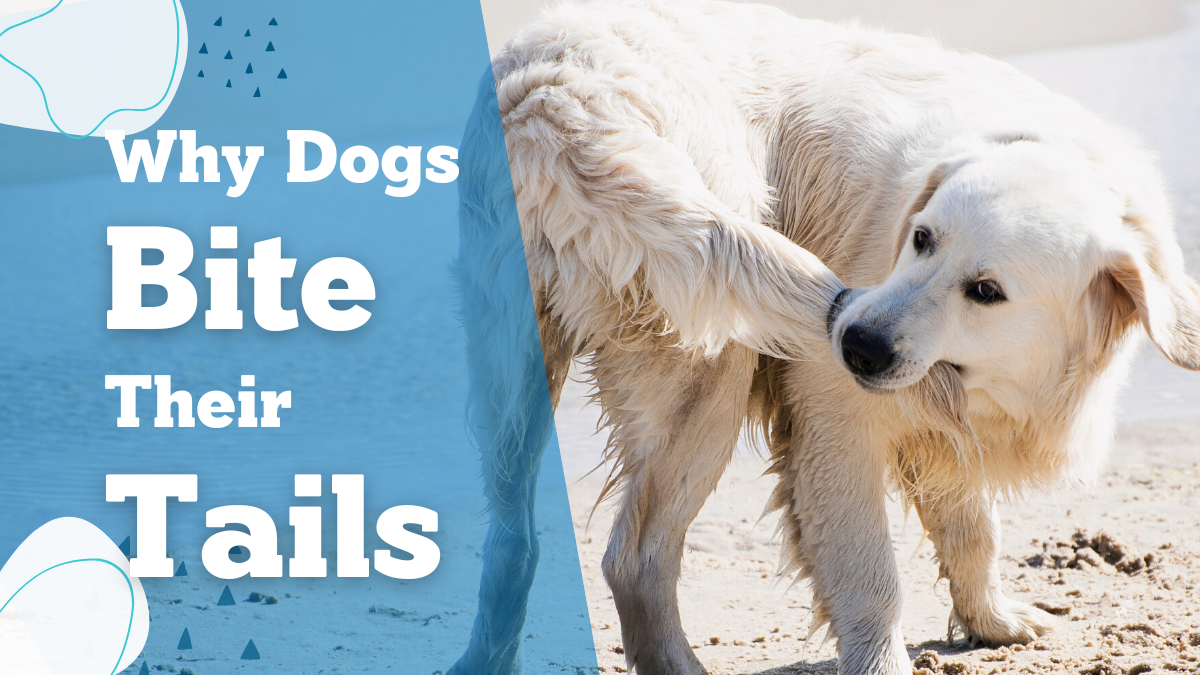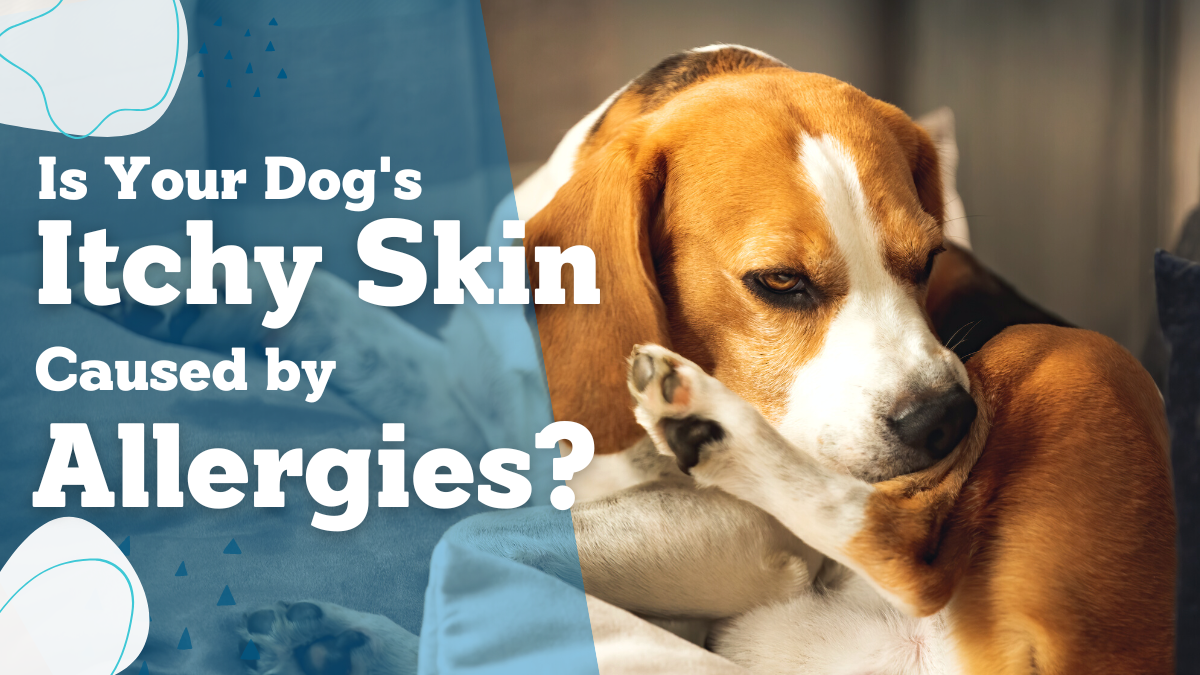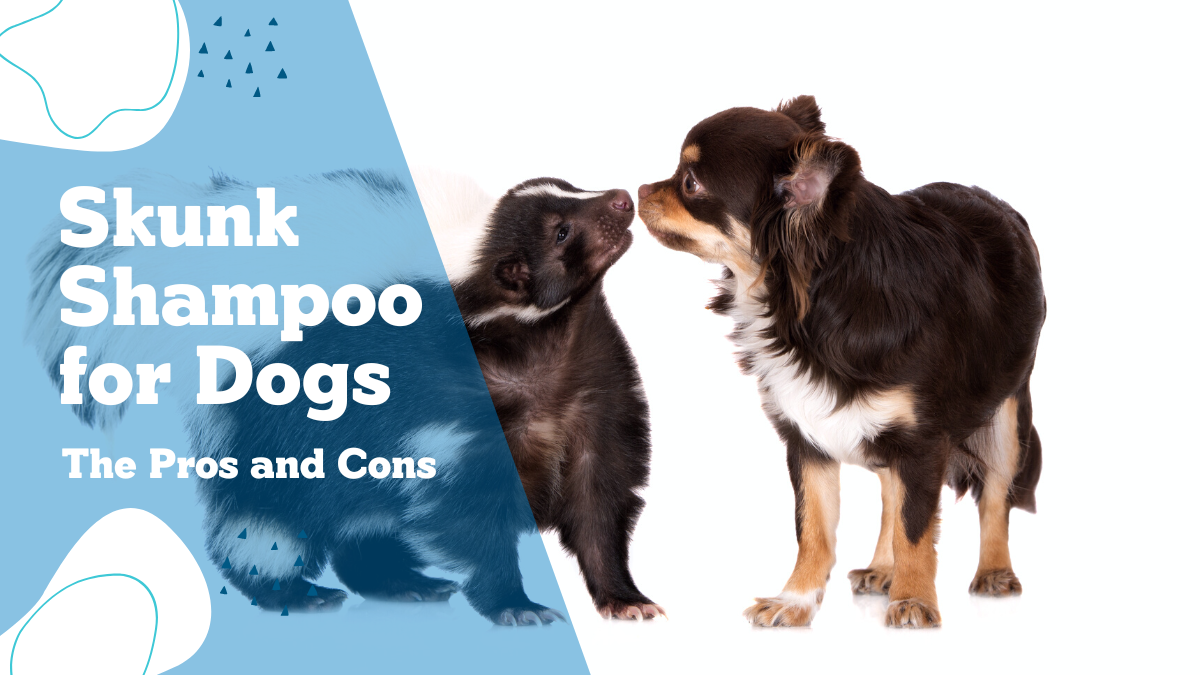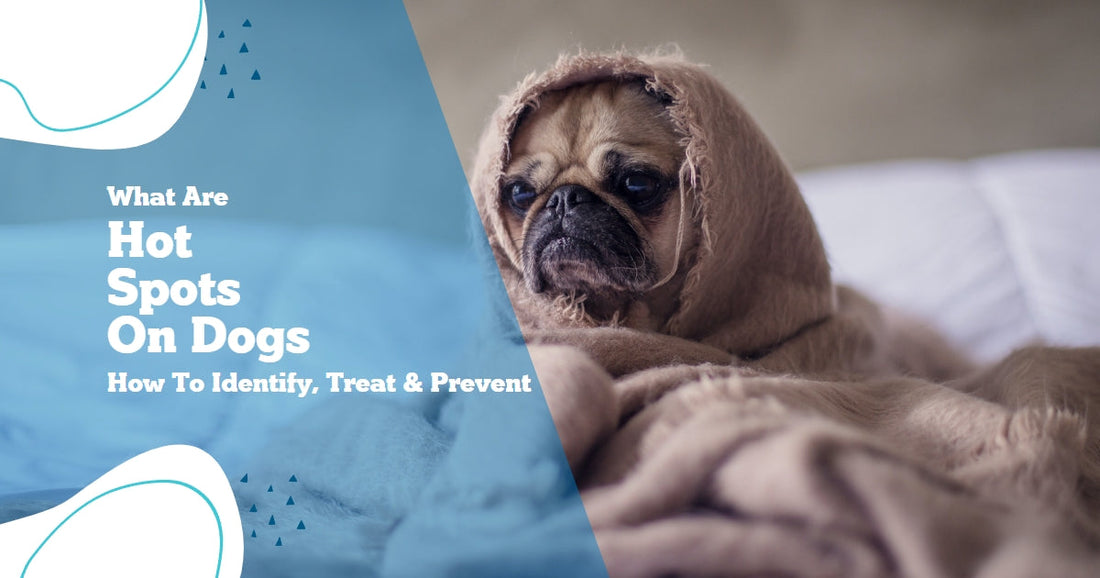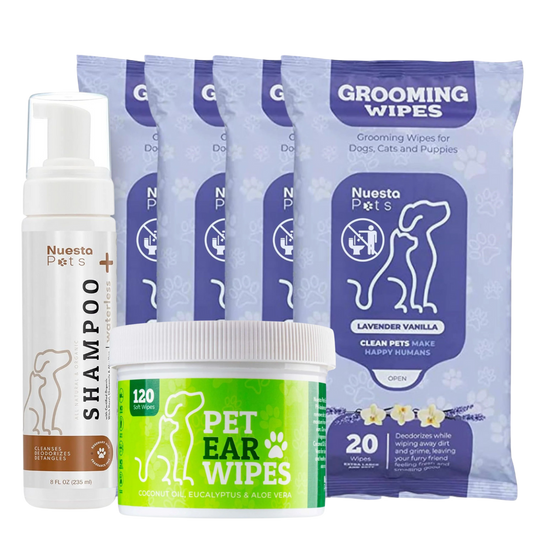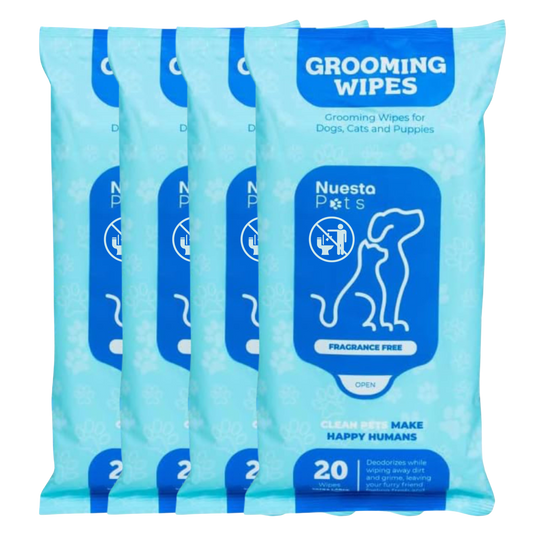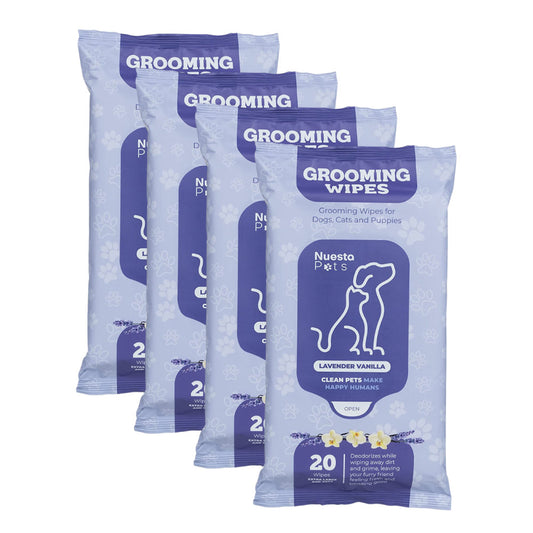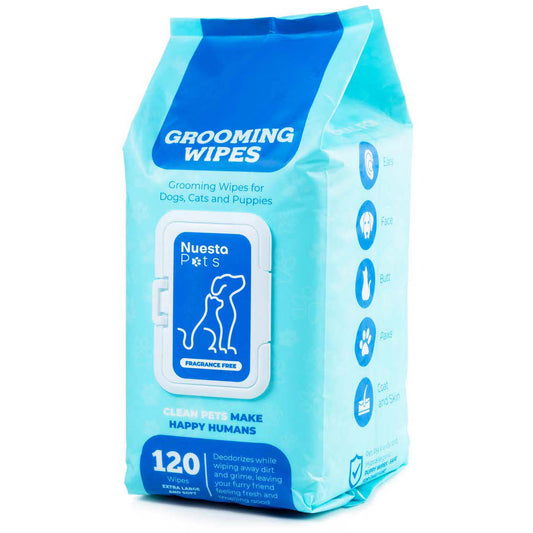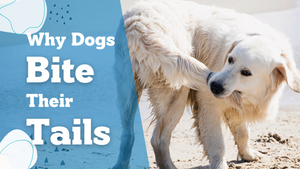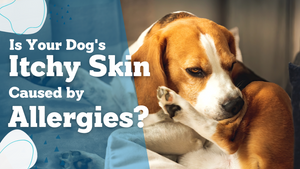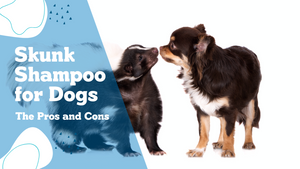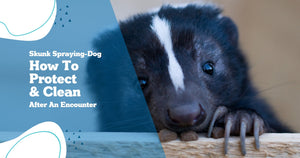A hot spot is a lesion that forms on a dog's skin when it becomes inflamed and itchy. The lesion is typically red and moist, and can quickly become infected if left untreated. Hot spots can be a frequent problem for our four legged friends.
Your pet's health is very important to us here at Nuesta Pets.
If you know how to identify hot spots and treat your dog's discomfort quickly, you can prevent them from becoming a bigger problem. In this article, we'll discuss what they are, how to identify them, and what you can do to treat and prevent them.

What is a Hot Spot - Dog Edition
Acute moist dermatitis is also known as a hot spot, typically identified as an itchy, hot, and inflamed areas on a dog's skin. They are often caused by an allergic reaction, a bacterial infection, or a fungus. Dogs will often lick hot spots obsessively, which can make them worse. Left untreated, hot spots on dogs can lead to a skin infection and cause discomfort. Early diagnosis and treatment are essential for quickly resolving and preventing further complications.
The bacteria usually enters the skin through a cut or other wound, but they can also enter through an insect bite or other irritation. Hot spots can occur on any part of the body, but they are most common on the head, neck, legs, and tail.
If your pet struggles with recurring or frequent Hot Spots, be sure to talk to your vet to make sure there is no underlying condition.

What are hot spots on dogs - Why do they form?
Dogs are susceptible to hot spots for several reasons. They love to lick and scratch their skin, which can cause the formation of hot spots.
Dogs may also develop chronic hot spots if they are exposed to wet or humid conditions for extended periods.
Dogs and cats have a bacteria near their mouths called Staphylococcus intermedius. This is a type of Staph, which is not typically contagious to humans and is the most prevalent disease discovered in hot spots.
How to identify Hot Spots on Dogs
Several telltale signs can indicate whether or not your dog has a hot spot. It is key to watch your dog's behavior.
Common symptoms include swelling, redness, excessive scratching, and hair loss around the affected area.
Excessive licking and further scratching may occur if your dog regularly gets hot spots. If you notice any of these symptoms, it is important to take your dog to the vet for an evaluation.
Do they cause skin irritations?
Left untreated, hot spots can cause damaged skin, or lead to skin infections. Hot spots usually appear as red, raised, wet areas on the skin.
They are often itchy, painful, and cause skin inflammation. Your dog may lick or chew at the hot spot, which can make it bleed.

Hot Spots and Food Allergies
If your dog is prone to or has recurring hot spots, it's important to be aware of the foods that could trigger an allergic reaction.
Some of the most common allergens include beef, dairy, chicken, lamb, and soy. If you suspect that your dog's hot spots are being caused by a food allergy, talk to your vet about how to treat allergies, or try switching to a hypoallergenic diet or using novel protein sources such as salmon.
You can also try an elimination diet in which you remove certain foods from your dog's diet and see if they improve over time.
Root Causes
Dogs are susceptible to hot spots for a variety of reasons. Some of the most common causes include - allergies, moisture, poor hygiene, and fleas.
There are several other potential root causes that can lead to hot spots, including - skin infection, insect bites or stings, and contact dermatitis.
If you suspect that your dog has hot spots, it is important to seek veterinary attention right away to identify the root cause and begin treatment.
How to point out an affected area
If you notice that your dogs is bothered by one specific area of their body, they may have a hot spot. Look for inflamed and itchy areas on a dog's skin that are sensitive to touch.
There are a few things you can do to help point out an affected area:
- Gently part so that the skin is exposed from the surrounding hair.
- Look for any areas of redness, swelling, or irritation on your dog's skin.
- If you notice any spots, try to gently wipe away any discharge and crusting that is present.
- Use an antiseptic solution to clean the area
- It may be too much to handle on your own so be sure to see your vet they can prescribe an antibiotic, allergy medication, or anti-itch medication to treat your pup.
Taking steps to prevent hot spots from developing can help keep your dog healthy and comfortable.
By maintaining a regular grooming routine, providing proper nutrition, and avoiding hot or humid environments, you can help protect hot spots on dogs and other skin conditions.
Preventative grooming
Routine grooming is essential to preventing hot spots on dogs from developing.
Grooming is one of the best ways to prevent these from developing. Here are some tips for proper grooming:
- Brush your dog's coat regularly to remove any loose hair or dirt that can irritate and prevent matted fur.
- Bathe your dog with mild, hypoallergenic shampoo if he gets dirty or sweaty. Nuesta's unscented pet shampoo is gentle enough for your pet's dry and sensitive skin.
- Keep nails trimmed to prevent them from causing scratches that can lead to dogs' hot spots.
- With dogs that have thicker coats, consider having them clipped short during humid weather months to prevent skin irritation.

Preventing hot spots in dogs
There are several steps you can take to prevent hot spots from developing in your dog. One key factor is to maintain a good flea control regimen, as hot spots can be caused by flea allergies or bites from small insects.
You should also avoid bathing your dog too frequently and make sure to clean any sores or scratches on their skin regularly. Consider using softer cleaning methods in between baths like Nuesta Pets Hypoallergenic Grooming Wipes or Spray On Waterless Shampoo. With regular care and attention, you can help keep your dog free from hot spots and other skin problems.
Hot spots are painful and can make your dog miserable. If left untreated, they can spread and become infected, which can lead to more serious problems.
Fortunately, hot spots are usually easy to treat if you catch them early. Some common treatments include applying antiseptics or antibiotics directly to the affected area, clipping and cleaning the fur around the hot spot, and giving your dog oral antibiotics or topical medications to help clear up the infection.

Treating hot spots on dogs
The method to treat will vary depending on the underlying cause. If hot spots are caused by an allergy, your vet may recommend a course of antihistamines, steroids, or allergy medications.
If your dog's hot spot is caused by a bacterial infection, your vet will likely prescribe antibiotics.
If hot spots are caused by a fungus, your vet may recommend an antifungal medication.
In all cases, it is important to clean the hot spot thoroughly and keep it dry to prevent further irritation.
How to maintain a healthy skin barrier
Dogs are susceptible to hot spots, which can lead to skin damage if left untreated. There are a few things you can do to help maintain and prevent them from developing.
1. Make sure your dog gets plenty of exercise. Exercise keeps the skin healthy by promoting circulation. It also helps release pent-up energy, which can reduce stress levels.
2. Feed your dog a healthy diet. A healthy diet helps the skin by providing essential nutrients and antioxidants.
3. When bathing your dog use a gentle, and non-irritating shampoo. Avoid using hot water, as this can dry out the skin. Instead, use lukewarm water and rinse your dog thoroughly. Check out our articles - Back to Basics: How to Bathe a Dog and Dog Bath - How Often to Give Your Dog a Bath for more bath time tips and tricks!
4. Brush your dog's fur regularly. Brushing helps remove dirt, debris, and dead skin cells from the coat. It also stimulates circulation and helps distribute natural oils throughout the coat.
5. You can give your dog a pet-safe daily vitamin supplement of omega 3 fatty acids like Nuesta Pet's Fish Oil Food Additive (Coming Soon!) to promote healthy skin and fur. Fish oil also supports canine heart health. It can help relieve allergies and joint pain and also reduce itchy and flaky skin.
6. Consider using Nuesta Pet's hot spot treatment (Coming Soon!) or cream to help soothe and speed healing. These products can help prevent your dog from licking and chewing the hot spot, which will minimize irritation and promote healing. With proper care and treatment, hot spots can be managed and prevented.

Can you use over-the-counter products?
There are products you can buy over the counter that can help treat hot spots in dogs. These include topical treatments, medicated ointments, and creams, as well as oral medications that have anti-inflammatory properties and relieve itchiness.
It is important to work with your veterinarian to identify the underlying cause of hot spots and to ensure that any treatment you use is safe for your dog. By taking these simple steps, you can help keep your dog comfortable and free of hot spots.

Additional tips and advice for dealing with hot spots on dogs
If your dog is one of the unlucky ones who suffer from hot spots, you know how uncomfortable and frustrating it can be.
Not only are they painful for your dog, but they can also be difficult to treat.
Make sure to keep the area clean and dry this means regular baths and/or cleaning with Nuesta Pet's unscented dog shampoo.
You can apply a cold compress to help reduce the inflammation and discomfort associated with hot spots.
Try an Elizabethan collar. Also known as an "e-collar," this is a collar made of plastic or other material that covers the dog's head, this will help them to stop licking and further irritating hot spots.
And of course, be sure to schedule regular checkups with your vet so that they can monitor your dog's condition and offer additional advice as needed.
With proper treatment and care, your dog can recover, and you can help prevent them from recurring in the future.
Hot spots are a common problem for dogs, but with early identification and treatment, you can help your pup avoid further irritation.
In this article, we’ve outlined the causes as well as how to identify and treat hot spots. We hope that this information will help you keep your furry friend healthy, comfortable and hot spot free. Good luck!
Share:

